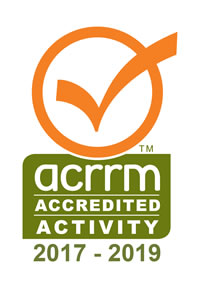Eye Emergencies (2): Eye Trauma and Acute Visual Loss
Please Note : This course has been updated. Enrolements for this course have now closed. To access the new course click the following link to : Go to the Emerg (2) Course Page
Eye Emergencies (2)
Eye Trauma/Acute Visual Loss
Latest Course update: January 2017
In this second part of the course on eye emergencies, we examine two important presentations: eye trauma and acute visual loss. Injury to the eye may involve the eyelids (eg. lacerations, subtarsal foreign body), conjunctiva (subconjunctival haemorrhage, laceration), cornea (abrasions, lacerations, foreign body), anterior chamber of the eye (hyphaema, lens dislocation), posterior chamber (vitreous haemorrhage), and retina (detachment). Careful assessment is essential in all cases to avoid missing subtle penetrating injuries and significant concomitant injury with blunt trauma to the eye. Many injuries can be assessed, treated, and followed up in the emergency department without the need for ophthalmology referral in uncomplicated cases. Examples include subconjunctival haemorrhage, welding flash, minor chemical injuries, corneal abrasions and corneal foreign bodies. Ophthalmology referral is indicated for lacerations of the eyelids or lacrimal ducts (these require accurate repair), suspected penetrating eye injury, severe chemical injury (especially alkali burns), macroscopic hyphaema, posterior vitreous haemorrhage, and retinal detachment.
Patients presenting with sudden visual loss or severely impaired vision should be managed as a medical emergency. They require urgent assessment and in many cases immediate referral for ophthalmology assessment. In some patients, associated symptoms of a red eye and/or severe pain may point to the probable cause. However, there are a group of patients where examination of the anterior eye (i.e. periorbital tissues, conjunctiva, cornea, pupil and anterior chamber) is normal. These patients are referred to as having a "quiet eye" and represent a distinct diagnostic group. They are the focus of this topic.
The course will specifically review:
1. Eye trauma: Assessment and acute management of the patient with eye injury
2. Acute visual loss: Differential diagnosis and treatment of conditions presenting with acute visual loss
Information about the course
-
Designed for medical officers, nurses, paramedics, and students in all medical fields
-
CME hours: Certified for 8 hours of continuing medical education
-
CPD accreditation: RACGP, ACRRM
-
Duration of enrolment: 12 months (commences from the date of course enrolment)
-
CPD certificate is provided with successful completion of the course
 Course Accreditation
Course Accreditation
ACRRM
-
-
Course Code: 8617
-
Points Allocation: 30 PRPD Points
-
![]() RACGP
RACGP
-
-
Activity Number: 91218
-
Points Category: Category 1
-
Points Allocation: 40 Points
-
Important
